Introduction
As we move into spring, crappie anglers eagerly anticipate the warming waters and longer days that promise some of the best fishing opportunities of the year. Spring provides anglers with a thrilling, fast-paced experience as these fish move into the shallows in search of warm water. When it comes to crappie fishing, some of the best fishing of the year happens during this time.
In this comprehensive guide, I’ll explore the essential gear, locations, and best tactics to ensure you have a successful and enjoyable spring crappie fishing experience.
** Any products purchased on this post I fully endorse, use and do help support content like and is greatly appreciated.
Section 1: Essential Gear for Crappie Fishing
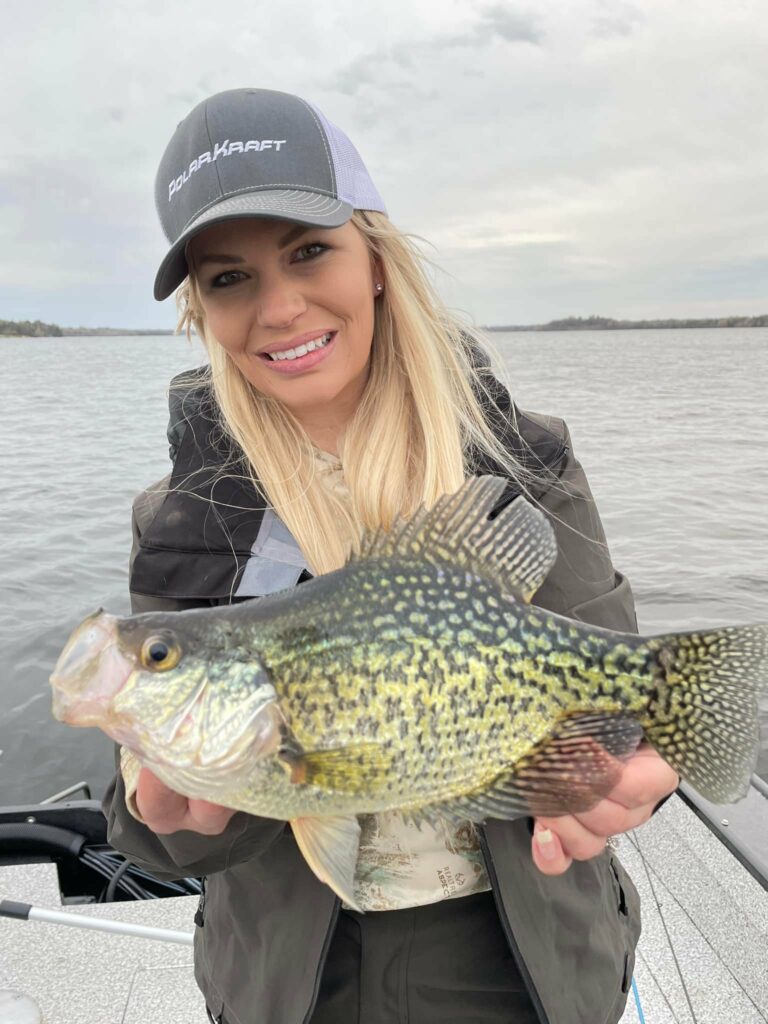
A good day on the water is only going to be as good as your preparation efforts. Preparing the right gear can make all the difference. That’s why below I go through the gear you should have in your arsenal when preparing for a successful day on the water.
1.1 Rod and Reel
Before we begin, let’s talk about rods. When it comes to crappie fishing, particularly in the north country, I recommend using lightweight gear. Typically I reach for a light to ultra-light rod. This is for 2 main reasons:
- Casting Lighter Baits. There are times when you’ll want, or need, to cast lighter baits especially during a tough bite. Therefore you need a lightweight setup to be able to properly throw those baits.
- More Sensitivity: A light powered rod can allow you to detect the lightest bites on the smallest jigs when rigged up properly.
Length is a matter of preference – some anglers want a super long rod (as long as 9’ or 10’) to reach into the most shallow weeds or cast far distances along the shoreline. Other anglers prefer a much shorter rod, allowing them to tuck into brush and giving them a little better control of finesse baits.
In a perfect world, you could have one of each ready to go, but if you are looking for one all around panfish rod, I’d take a mid length (6’6 or 7’0) light powered rod that can be versatile in any conditions. I use and highly recommend anything from the St Croix Panfish Series line.
1.2 Line
Monofilament, braid, or straight fluorocarbon will all work fine for crappies. I personally prefer a braid/fluoro combo, as braid is tough, sensitive and doesn’t have line memory that monofilament does. Pair it with fluoro and visibility isn’t a factor either.
As for line weight, try a 4-6 pound test, as it’s lightweight and will allow you to throw small presentations and feel the lightest bites. Essentially it will pair well with the rest of your presentation, allowing you the versatility to throw small baits but still pull in a larger fish.
As for brand choice I personally recommend 6 lb Power Pro paired with 6 lb Vanish line combo, but anything finesse and lightweight will do the trick.
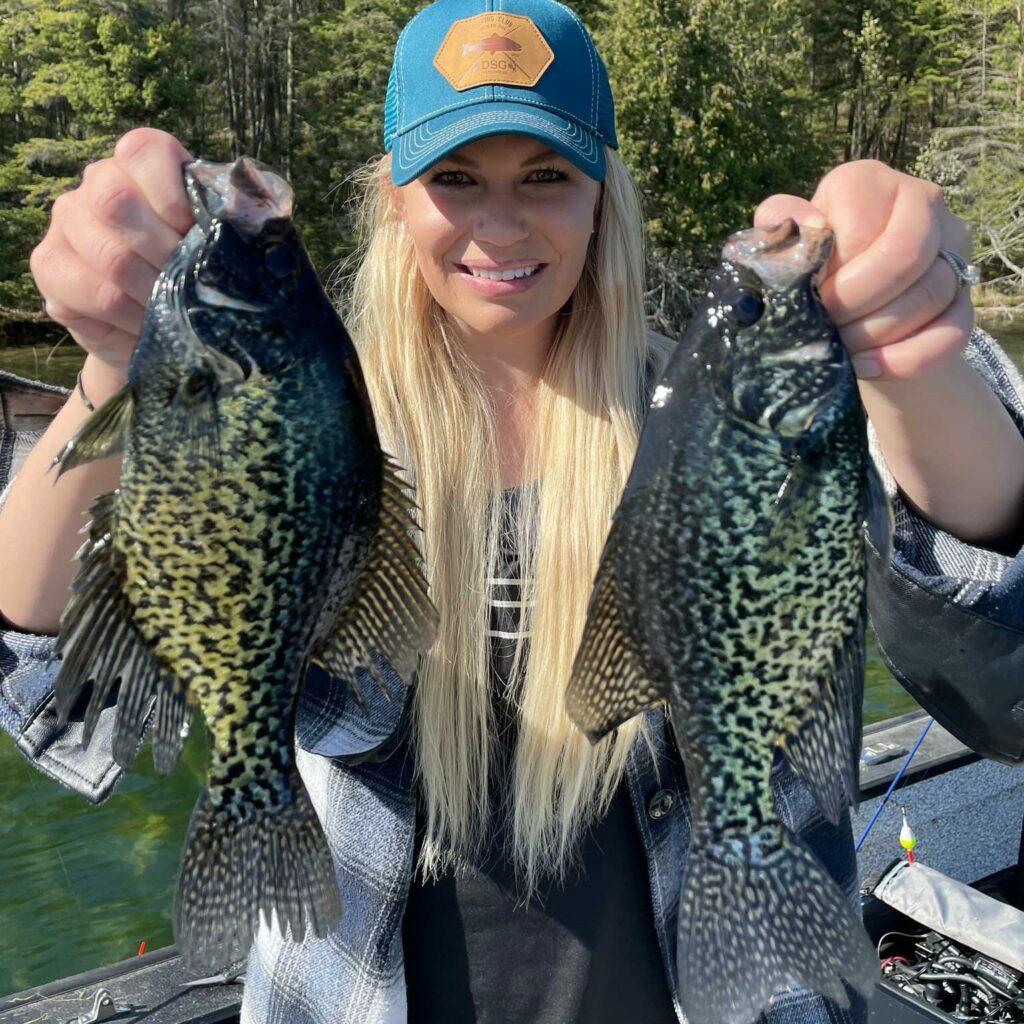
1.3 Lures and Baits
For lures and baits, of course it’s ideal to keep a large variety on hand for any situation. However, if you need a place to start then I recommend keeping a few different jigs size ⅛ and smaller on hand. I will even keep 1/24 or 1/32 ice jis on hand to use on bobbers or during a VERY tough, finesse bite. I also recommend always having an 1/16 underspin jig. I LOVE these for covering water and finding fish this time of year. It’s simple and universal and will work with a variety of setups.
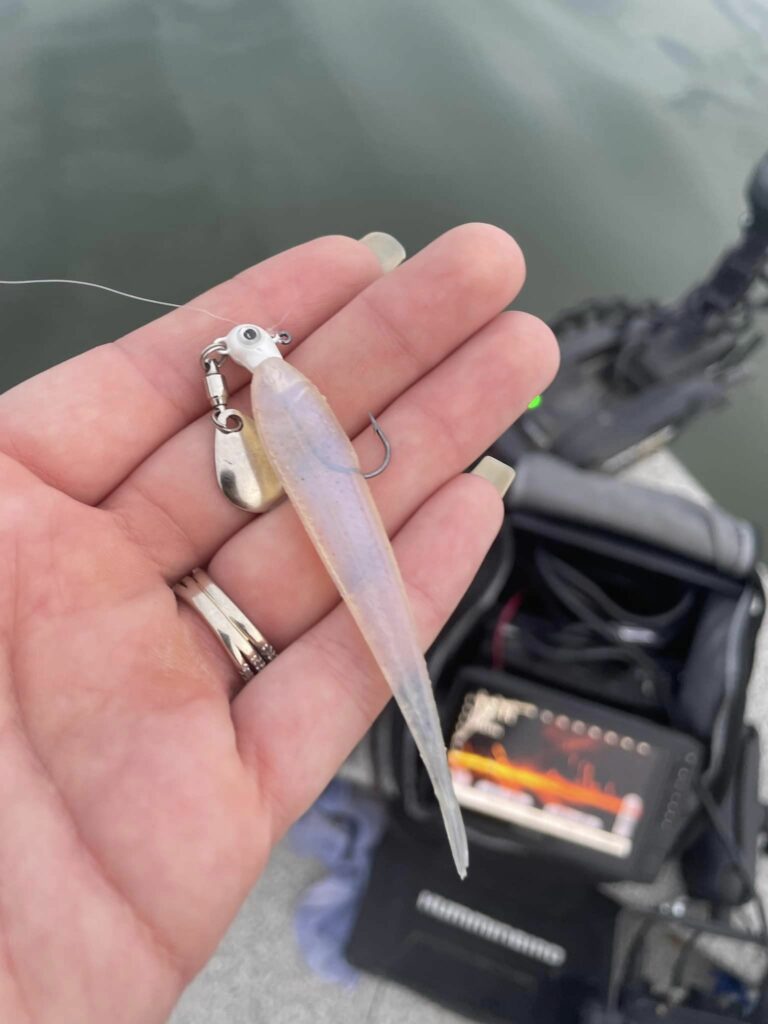
A brand new jig/plastic combo sent to me was the Yum FF Sonar Minnow (use code NICOLE for 15% off). Hands down one of the most productive baits I’ve ever owned and I was only able to take advantage of it the last month of the season. It pairs with the Yum FF Jig (NICOLE15 for 15% off) but will also pair well with any underspin setup.
If you are pitching panfish plastics I recommend a 1/16 oz such as the Crappie MoGlo jig. You can grab them at Lurenet using code NICOLE15 for a discount.
1.4 Terminal Tackle
Terminal tackle like hooks, bobbers, and sinkers are crucial for crappie fishing. Use light wire hooks in sizes 4 to 6, small split shot sinkers, and slip or spring bobbers to create an effective presentation.
Spring bobbers are especially beneficial early in the season, as they are easy to make quick adjustments and perfect for shallow water. The biggest benefit is that they also tend to be more sensitive than a slip bobber.
My favorite is the Thill Spring Pencil bobber for early in the year. I pair it with a split shot and size 6 hook or Tungsten Toad jig. You can pick them up here for a discount with code NICOLE15 as well. I recommend the ½ in pencil for this particular time of year, but the ovals will do well too.
Section 2: Prime Locations for Spring Crappie Fishing
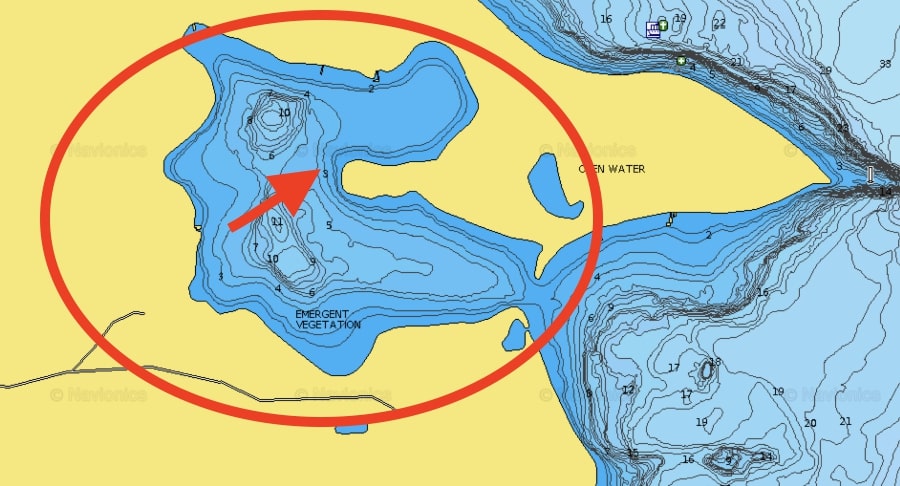

Once you have the gear, next let’s discuss where to find them. The number one factor to consider in the spring is the water temperature. Fish look for warm water and therefore so should you. However, unlike walleye and pike who spawn early in the spring, when temperatures are in the 40’s, crappie spawn much, much later. This behavior heavily influences where to find them. That’s why below we break down the pre-spawn, spawn, and post spawn period to help you better locate fish this spring season.
2.1 Pre-Spawn Period
During the pre-spawn period, when water temperatures range from 45-55°F, crappies will be spending much more time in the shallower, warmer waters near structure or cover. Look for crappies near sunken trees, brush piles, docks, and weeds along the shoreline. The warm and sunny days will make it easy to find them in these locations.
During cold, cloudy stretches, don’t be afraid to find them out a bit deeper as shallow water cools quick and they often flee back to deeper water.
2.2 Spawn Period
As water temperatures rise into the mid 60’s, crappies typically begin their spawning process. In Minnesota, Wisconsin, and adjacent northern waters, this typically falls into the end of May and early June. During this time, they can be found in shallow waters with firm bottoms, such as gravel or sand, and around submerged vegetation. Key areas include shallow bays, protected coves, and backwater areas.
2.3 Post-Spawn Period
After spawning, crappies will start to disperse from their shallow nests to deeper, cooler waters again. Look for them scattered in vegetation near drop-offs, ledges, and submerged structure near the shorelines they spawned near. Often times you’ll do best in these situations trolling with spinners and floating snells. Don’t be afraid to go through the heart of the weed beds, as you’ll likely pick scattered fish off as you slowly troll through.
Section 3: Tactics for Spring Crappie Fishing
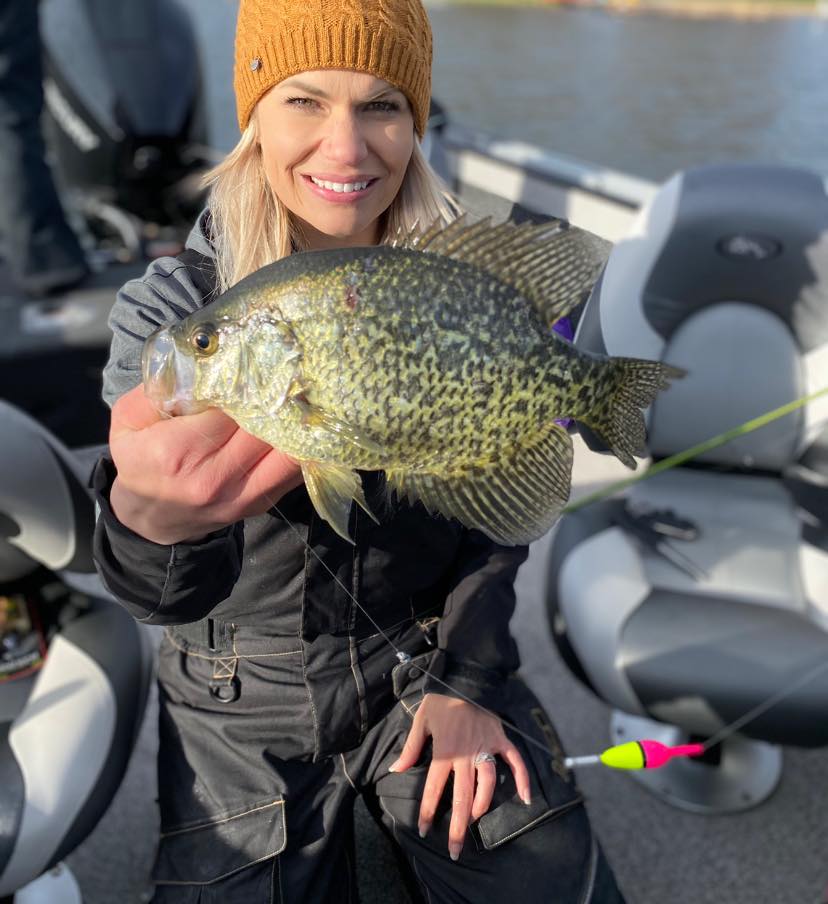
3.1 Bobber Fishing
Bobbers are effective all year around, but they are particularly effective in the spring. I love a good Thill Pencil Spring Bobber this time of year. They do better navigating the weeds and are the perfect go-to during a tough bite. A spring bobber is particularly beneficial, as it is more sensitive than a slip bobber setup, and very simple to quickly adjust when targeting the shallow shoreline.
Another option is the crappie cork setup which allows for using slip bobbers in deeper water and spring bobbers for that shallow bite and added sensitivity. Thill’s Crappie Cork comes ready to go just for this situation.
Pair your bobber setup with a split shot or a small tungsten jig (I use the Lindy Tungsten Toad) and a crappie minnow or plastic. When using plastics (such as the Bobby Garland Slab Hunt R).
You can find all of these items at Lurenet.com and don’t forget to save with code NICOLE15.
3.2 Casting and Retrieving Live Bait
Another must have is what I call a “search bait”. This is typically a small under spin jig and minnow. Cast your jig or minnow towards likely crappie spots near shore like submerged cover, docks, or weeds, and keep it just off bottom. Slowly retrieve your presentation, pausing and twitching it occasionally to entice crappie to bite.
3.3 Casting and Retrieving Soft Plastics
Cast and retrieve soft plastic baits just like you would live bait. Plastics are more durable, and can really be beneficial when working heavy weeds. A slow, steady retrieve with occasional pauses and twitches can entice crappies to strike. I personally love the Bobby Garland Line (code NICOLE15).
Section 4: Electronics
Of all the times electronics are the least beneficial, I’d say it’s in the spring when the fish are up shallow and along shore. However, there are still plenty of benefits to using electronics this time of year, especially to speed up your process on a brand new lake.
Of course mapping reigns king so you can identify the areas you want to try BUT side-imaging and live sonar can really help you identify fish up shallow. Side imaging works great for picking off shallow crappie along the weeds. Where live sonar can really allow you to dial in your target when you see the fish moving in less than 10 feet.
I’ll often scan long stretches quickly with side-imaging and when I see something promising I’ll spin around and check movement with live sonar to dial in the location. Staying far from the school of fish to not disturb them, I’ll grab an underspin jig and cast at the school picking them off OR find they weren’t the target species. Using your side imaging and live sonar can REALLY increase your efficiency on new water but is nowhere near necessary this time of year.
Conclusion

Spring crappie fishing can be an exciting and rewarding experience. By understanding the necessary gear, identifying key locations, and employing effective tactics, you’ll be well on your way to a successful day on the water. Remember that conditions can change quickly during the spring, so be prepared to adapt your approach and experiment with different techniques until you find what works best. With a little patience and persistence, you’ll be reeling in slab-sized crappies in no time. Happy fishing!
Grab all Lindy, Yum, Bobby Garland and more at lurenet.com using code NICOLE15 for a generous discount and free shipping over $35.00.


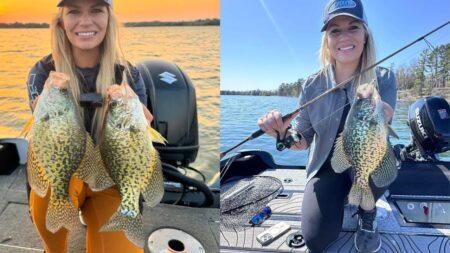
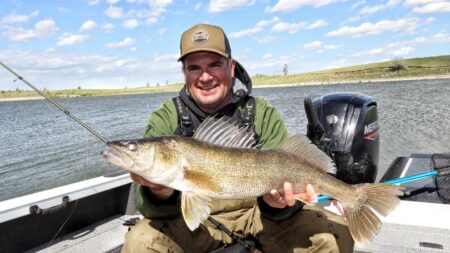
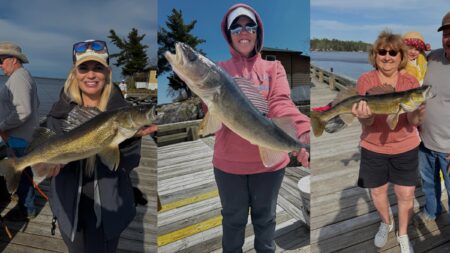

1 Comment
Very well written and informative. Getting excited to do open water fishing later this week.